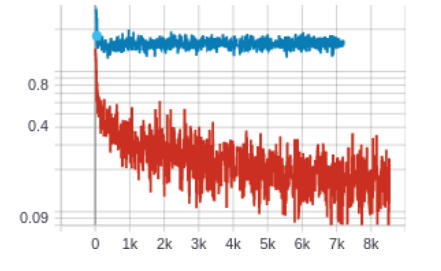1. Introduction
We all know that there are 2 main problems when training deep learning model which are overfitting and underfitting problems. Each problem have different solutions to tackle. e.g
- With overfitting: Add more data, data augmentation, reduce complexity of model,etc
- With underfitting: Using bigger model, double-check some bugs (e.g input’s unnormalized, bug in loss function causing Nan value, etc)
2. My case
At the beginning of my project, I train the eyegaze model and got the underfitting problem, the training loss looked like the image below.
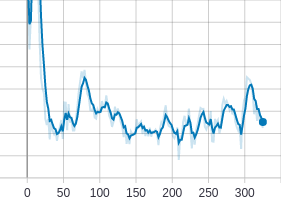
Let’s together debug it.
Firstly, I check the above-mentioned solutions:
- Using bigger model. From mobilev2 –> resnet50
- Check if input image is normalized. Yes it is normalized.
-
Loss function I used was l2, and it was obvious that the loss values are the normal float number, there is no Nan value here.
\[lossgaze = \sqrt(pred - gt)^2\]
Sadly, it did not fix the issue. So…, what to do next? I thought there may be inconsitence or corruption in the dataset like wrong labels or stuff like that, which might lead to model confusing and difficult to learn.
Yeah it might be, then I decided to use a very small subdet of dataset (around only 100 samples), which I manually double-checked the quality, for training to see whether the model can even overfit it or not. This technique is mentioned on the training model recipe of Karpathy overfit one batch.
Unfortunately, It still does not work, the training loss did not even decrease! So…, what next? Uptil now, it seems there is nothing wrong with the forward pass from data, label and loss function. What if there is any wrong with the backward pass , which actually is gradient. Yeah, let’s check it. Below is snippet of code to log gradient and weight of any params using Tensorboard
from torch.utils.tensorboard import SummaryWriter
import numpy as np
import torch
class TensorBoardLogger():
def __init__(self, root="./", experiment_name="experiment1"):
self.root = root
self.experiment_name = experiment_name
self.writer = SummaryWriter(f'{root}/{experiment_name}')
def log(self, metric="loss", value=0.0, step=0):
self.writer.add_scalar(metric, value, step)
def log_hist(self, tag="gradient_1", value=0.0, step=0):
self.writer.add_histogram(tag, value, step)
def track_model_gradients(model, tensorboardLogger, step):
for i, (tag, parm) in enumerate(model.named_parameters()):
if hasattr(parm, 'grad'):
tensorboardLogger.log_hist(tag=f"gradient_{tag}", value=parm.grad.data.cpu().numpy(), step=step)
if hasattr(parm, 'data'):
tensorboardLogger.log_hist(tag=f"weight_{tag}", value=parm.data.cpu().numpy(), step=step)
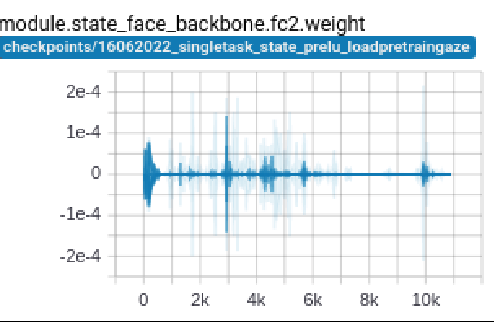
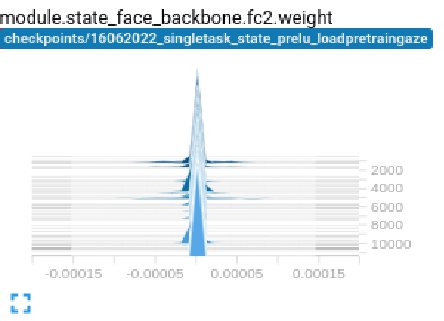
Surprisingly, the weight of fc2 layer of the model ~ 0, which lead to gradient approximately 0 too. When fc2’s gradient is 0, then all the gradient of earlier layers will be 0 too due to the chain rule when do backpropagation.
Finally, we found the reason lead to underfitting in my case is that the weights of layers are not well-intialized causing all gradients become 0.
3. Solution
The sollution is really simple. Init the weights more carefully (.i.e avoid theirs values ~ 0). Below is the snippet of code I used.
def initialize_weights(m):
if isinstance(m, nn.Conv2d):
nn.init.kaiming_uniform_(m.weight.data,nonlinearity='relu')
if m.bias is not None:
nn.init.constant_(m.bias.data, 0)
elif isinstance(m, nn.BatchNorm2d):
nn.init.constant_(m.weight.data, 1)
nn.init.constant_(m.bias.data, 0)
elif isinstance(m, nn.Linear):
nn.init.kaiming_uniform_(m.weight.data)
nn.init.constant_(m.bias.data, 0)
-
The weights are initialized well (the left side) vs not well (the right side)
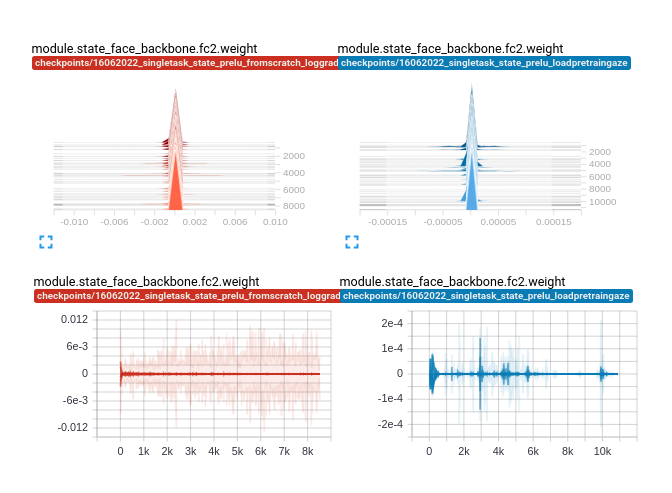
-
When weights are initialized well, then loss starting to converge.
